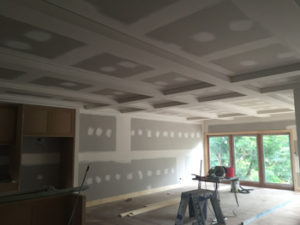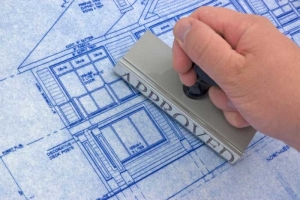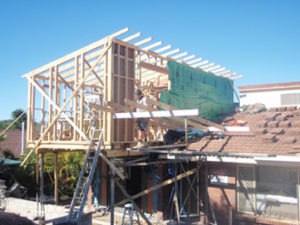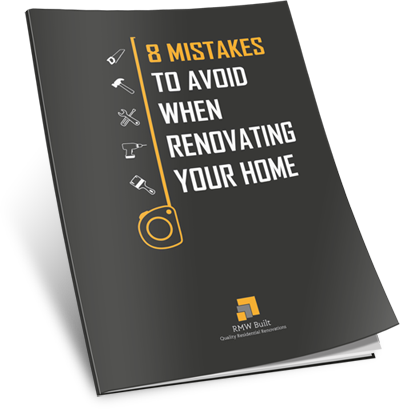EXTENSIONS
Instead of moving house, many people decide to stay where they are and increase the size of their home to suit their family needs and lifestyle. In comparison to relocation, extending is usually a less expensive option when you consider the savings in stamp duty, agents’ fees and the cost of buying a better/bigger home.
You have 3 options when it comes to extending:
- Extend Out – add on to the back, side or front of the house – or all three!
- Extend Up – build a second storey
- Extend Down – lift your home or dig down and build underneath
Depending on the land, the house and your needs – you might decide on two or three of these options.
We have considerable experience in doing all of these.
Important Considerations for Extensions
When extending your home, we recommend matching the new building materials to the existing building as closely as possible. You want it to look like it belongs and has been there all along, not like something that has been tacked on as an afterthought, as was often done in the latter part of the 20th century.
The main considerations for extending are:
- the size and shape of your house and block
- how much additional space you require
- what your budget is
- if the project will add value to your property or if there’s a danger of over-capitalisation.
As a rule, home extensions do add value to a home, but a poorly designed renovation or a renovation that takes valuable space away from a property can work against its eventual resale value
Extend upwards or outwards?
Adding a second floor is generally more expensive than adding a ground floor extension, but may be the best solution if your land size is restricted and you want to preserve the outdoor space you have. Sometimes all you need is a small extension, a rearrangement of internal walls and an outdoor living space to create the space and functionality you require. We’ll help you work out the best options for your requirements, parameters and budget.
 |
 |
Extending Upwards
If you have a smaller block or limited garden space, extending upwards is your best option. Adding another level to your home will preserve garden space as well as bring more natural light into your home. Remember to plan the new rooms according to the views – the bedrooms and the living areas should receive the best views. Be aware that extending upwards will require the roof to be removed while the work is completed so your builder will need to provide protection by applying a tarp to the exposed areas in case of bad weather and the like. We would also recommend extending our Contracts Works Insurance Policy to include the existing structure. Most Home and Contents Insurance does not include damage to the existing property when it is under construction and while our Contracts Works Policy covers all new work it does not cover the existing property either.
Structural Considerations when Extending Upwards

Gaining Approvals

- Was the house built before 1946? If so, it could be listed in the Brisbane City Council Traditional Character Building overlay and will require planning approval, particularly if some demolition is required. The extension will be required to comply with the Traditional Character Building Code.(Mainly inner city Brisbane)
- In most cases Building Approval will be required. The extension must comply with local zoning regulations and the local Neighbourhood Plan
- In some instance a Development Approval may also be required.
- Plumbing approvalmay be required or the plumber can fill out a Form 4 certificate to approve the alterations.
- A siting variation (or relaxation) may be required to build within the boundary setbacks of your property.
Each Council has different requirements in some areas and this can be confusing if you’re not familiar with the specific building and environmental requirements of your local Council.
We have years of experience with this and use private certifiers who will provide guidance every step of the way. In fact we’ll do most of it for you to make sure the process runs as smoothly as possible.


